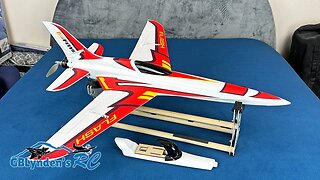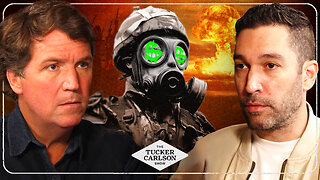Top Flite Giant Scale Focke Wulf FW-190 WWII RC Plane at Warbirds Over Whatcom
This video footage was taken at the 2016 Warbirds Over Whatcom RC Warbird Event. The video subject is a 1/5 scale FW-190 RC Plane. It is a Top Flite Giant Scale Focke Wulf FW-190 WWII RC Plane and it flies very nicely!
Link to similar RC Planes: https://bit.ly/3Uio952
The links in this description are affiliate links. They give me a small commission on sales which helps support the channel and keep it independent: https://www.amazon.com/shop/gblyndensrc
Visit https://www.gblynden.com/ to learn more about the hobby!
RC Accessories:
- Spektrum Smart Checker: https://bit.ly/329hl12
- Spektrum IX20 Radio: https://amzn.to/3qFTbHe
- Spektrum AR620 Receiver: https://bit.ly/3Aay021
Other Fun RC Planes:
- Arrows Husky 1800mm PNP STOL RC Plane: https://bit.ly/3v3qQM9
- Arrows BAe Hawk EDF Jet: https://bit.ly/2VY0HB7
- Arrows T-33 EDF Jet: https://bit.ly/3h3Z24a
- Arrows F-86 EDF Jet: https://bit.ly/3hIli3C
- Arrows F-15 EDF Jet: https://bit.ly/3Cxi10D
- Arrows RC MiG-29 EDF Jet: https://bit.ly/2ZDmjBY
- Arrows RC Marlin EDF Jet: https://bit.ly/2LUe4cN
- Arrows T-28 Trojan RC Warbird: https://bit.ly/2LOr3N4
- Arrows Bigfoot RC Plane: https://bit.ly/2TJliVh
This Giant Scale Top Flite FW-190 and the kind of RC Planes I am used to flying are very different. In fact, when you consider my Parkzone FW-190A-8 Parkflyer looks like a midget compared to this, it makes you realize that you aren't quite flying with the RC Warbird big boys quite yet. It is a big step up from War Thunder or anything comparable though! lol
The pilot is my buddy and he has flown a number of very entertaining sorties with a variety of different Warbirds for us to enjoy in the past.
They are the following:
- Freewing F-14 Tomcat Twin 80mm EDF Jet
- FMS 1700mm F4U Corsair WWII Warbird
- Freewing F-16 Super Scale 90mm EDF Jet Fighter
- FMS P-51 Mustang 1400mm WWII RC Warbird
For some history on this plane, please read below:
During World War II, few sights could make an Allied pilot's blood run cold like that of a Focke-Wulf 190 headed his way. So fearsome was this fighter's reputation that it was known to friend and foe alike as the "Butcher Bird."
The Focke-Wulf Fw 190 Würger (English: Shrike) was a German single-seat, single-engine fighter aircraft designed by Kurt Tank in the late 1930s and widely used during World War II. Powered by a radial engine in most versions, the Fw 190 had ample power and was able to lift larger loads than its well-known counterpart, the Messerschmitt Bf 109. The Fw 190 was used by the Luftwaffe in a wide variety of roles, including day fighter, fighter-bomber, ground-attack aircraft and, to a lesser degree, night fighter.
When the Fw 190 started flying operationally over France in August 1941, it quickly proved itself to be superior in all but turn radius to the Royal Air Force's main front-line fighter, the Spitfire Mk. V,[2] especially at low and medium altitudes. The 190 maintained superiority over Allied fighters until the introduction of the improved Spitfire Mk. IX in July 1942 restored qualitative parity.[3] The Fw 190 made its air combat debut on the Eastern Front in November/December 1942; though Soviet pilots considered the Bf 109 the greater threat, the Fw 190 made a significant impact.
The Fw 190 became the backbone of the Jagdwaffe (Fighter Force), along with the Bf 109. On the Eastern Front, the Fw 190 was versatile enough to use in Schlachtgeschwader (Battle Wings or Strike Wings), specialised ground attack units which achieved much success against Soviet ground forces. As an interceptor, the Fw 190 underwent improvements to make it effective at high altitude, enabling it to maintain relative parity with its Allied opponents. The Fw 190A series' performance decreased at high altitudes (usually 6,000 m (20,000 ft) and above), which reduced its effectiveness as a high-altitude interceptor, but this problem was mostly rectified in later models, particularly in the Junkers Jumo 213 inline-engine Focke-Wulf Fw 190D series, which was introduced in September 1944.
The A-8 entered production in February 1944, powered either by the standard BMW 801 D-2 or the 801Q (also known as 801TU). The 801Q/TU, with the "T" signifying a Triebwerksanlage unitized powerplant installation, was a standard 801D with improved, thicker armour on the front annular cowling, which also incorporated the oil tank, upgraded from 6 mm (.24 in) on earlier models to 10 mm (.39 in). Changes introduced in the Fw 190 A-8 also included the C3-injection Erhöhte Notleistung emergency boost system to the fighter variant of the Fw 190 A (a similar system with less power had been fitted to some earlier Jabo variants of the 190 A), raising power to 1,980 PS (1,953 hp, 1,456 kW) for a short time.
This beastly plane makes even the new E-flite FW-190 1500mm RC Warbird look like a kids toy lol
-
 5:03
5:03
GBLynden's RC
7 months ago112MPH FMS Flash 850mm RC Speed Plane | Unboxing & Overview
101 -
 LIVE
LIVE
The Jimmy Dore Show
2 hours agoCongress Erupts Into Cat Fight! Michael Malice Joins Us To Discuss N. Korea! w/ Michael Malice
19,664 watching -
 LIVE
LIVE
WeAreChange
2 hours agoIt’s NOT Just The Frogs — They’re Turning All The Animals GAY??
2,573 watching -
 1:02:40
1:02:40
In The Litter Box w/ Jewels & Catturd
20 hours agoPolice State | In the Litter Box w/ Jewels & Catturd - Ep. 570 - 5/17/2024
21.5K16 -
 1:57:17
1:57:17
Twins Pod
2 hours agoTwins Pod - Episode 13 - Tim Kennedy: Seals Vs Green Berets, Tigers Vs Bears, & Israel Vs Palestine
29K14 -
 2:21:43
2:21:43
Tucker Carlson
1 day agoDave Smith: Russia, Israel, Trump & the Swamp, Obama, and the Media Attacks on Joe Rogan
118K318 -
 59:55
59:55
shaneyyricch
2 hours agoPERMANENTLY BANNED ON YOUTUBE - LETS RUMBLE
8.85K7 -
 3:23
3:23
Stephen Gardner
2 hours agoNew Trump Testimony DESTROYS Michael Cohen HUSH MONEY case!
4.09K6 -
 39:11
39:11
Line Drive Podcast
3 hours agoHarrison Butker is the left's new Enemy #1!
10.9K4 -
 7:10:22
7:10:22
Turtleboy Daily News
8 hours agoKaren Read Trial Day 14
52.1K22